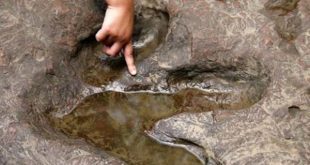 The secret of Bulgakov’s death revealed with the help of the manuscript of “the Master and Margarita”.
The secret of Bulgakov’s death revealed with the help of the manuscript of “the Master and Margarita”.
It is known that in the last years of the life of Mikhail Bulgakov, author of “the Master and Margarita”, suffered from kidney problems and was forced to take morphine. Carefully examined the manuscript pages of the novel, scientists have found traces of anesthetic agents.
The new work of scientists devoted to finding in the draft biological markers of the disease that killed the writer.
Bulgakov began work on “the Master and Margarita” in 1928, however, the first version of the novel in 1930 destroyed. Then the writer returned to the unrealized idea and worked on the drafts until his death in 1940. The novel remained unfinished until the writer’s wife Elena Bulgakov didn’t finish the work. Full book version of “Master and Margarita” was first published only in 1969, as the censors and government officials prevented the publication of the novel.
An international group of scientists headed by Professor pier Righetti Giorgio conducted a study of the manuscript Bulgakov and found in its pages traces of morphine. This substance, according to the researchers, was used by the writer for the pain that he felt due to hypertensive nephrosclerosis hereditary renal disease. However, some experts have disputed the authors ‘ conclusions, putting all correctness of the method of isolation of morphine from the pages of the manuscript and the fact that morphine could be left by the NKVD.
To confirm the previously obtained results, the scientists decided to find out whether there are any pages on which the author worked in the last years of his life, traces of protein markers of kidney disease. To do this, the researchers analyzed ten of the 127 pages of manuscript a new method, the essence of which was to use laminated films made of ethylvinylacetate to capture protein molecules from areas of paper which contact the writer.
Previously to isolate morphine from the pages of the manuscript using the method of deposition of the resins, however, many scientists believe this approach is unacceptable in the study of valuable documents in libraries and public repositories: the particles of resin to remain among the cellulose fibers and damage the paper. The technology that uses laminated film ethylvinylacetate safer: no particles remain on the pages, but is efficient capture of peptides, because the granules protrude slightly from the film and can adsorb biological material.
Not every ancient document is suitable for such an analysis. Although now in the production of paper is not acid is used, in Bulgakov’s time acid treatment, as is wrongly thought to have extended the lifespan of pages. Production additives used in 1850, which reduced pH made at the time of the paper. Manuscripts with high acidity were found in the early scientific works are usually deprived of the traces of morphine and protein. However, 127 pages, which were obtained by scientists for analysis, more suited for research because it had neutral acidity. They were gray in color, while the treated paper becomes yellow and becomes more brittle.
Scientists were able to extract at least three proteins, namely periostin, N-acetyl-β-glucosaminidase and netrin — these molecules are biomarkers of renal pathologies. For researchers, this discovery was valuable, as the age of a manuscript is more than 75 years, and page was not isolated from environmental influences. Each protein was identified on the basis of 3-4 peptides (amino acid sequence) that increases the reliability of the result. In addition, it was identified 29 gene products (hydrolases, oxidoreductases, calcium-binding proteins and protective molecules) and two proteins characteristic of Staphylococcus aureus. It’s a spherical gram-positive (have a single-layer cell membrane) bacteria, which are pathogenic for humans. They usually live on the skin, nasal mucosa and respiratory tract. The analysis showed that the identified proteins belonging to Bulgakov tissues, could be involved in such protective processes as phagocytosis, endocytosis and immune response involving B-lymphocytes.
All protein molecules have been identified in eight of the ten studied pages. The discovery of three proteins — potential biomarkers of the disease, according to scientists, refutes the hypothesis that traces of morphine had been left by the NKVD, who confiscated the manuscript Bulgakov. It is highly unlikely that they all suffered from the same pathology of the kidneys. In addition, the intelligence agents of the time would hardly have taken pain relievers like morphine, they often use stimulant drugs, such as heroin or cocaine. Thus the researchers confirmed their initial conclusion that they revealed the morphine belonged to Bulgakov.
Recall that the official cause of death of the writer was called hypertensive nephrosclerosis. In addition, there is a version that Bulgakov was poisoned.








